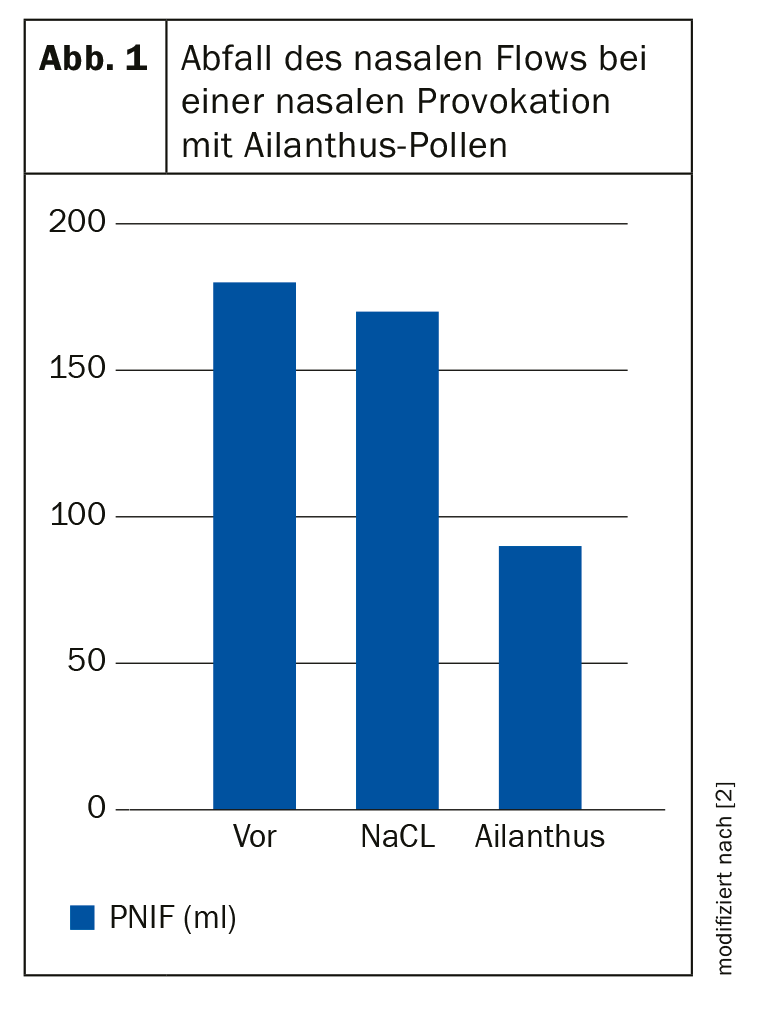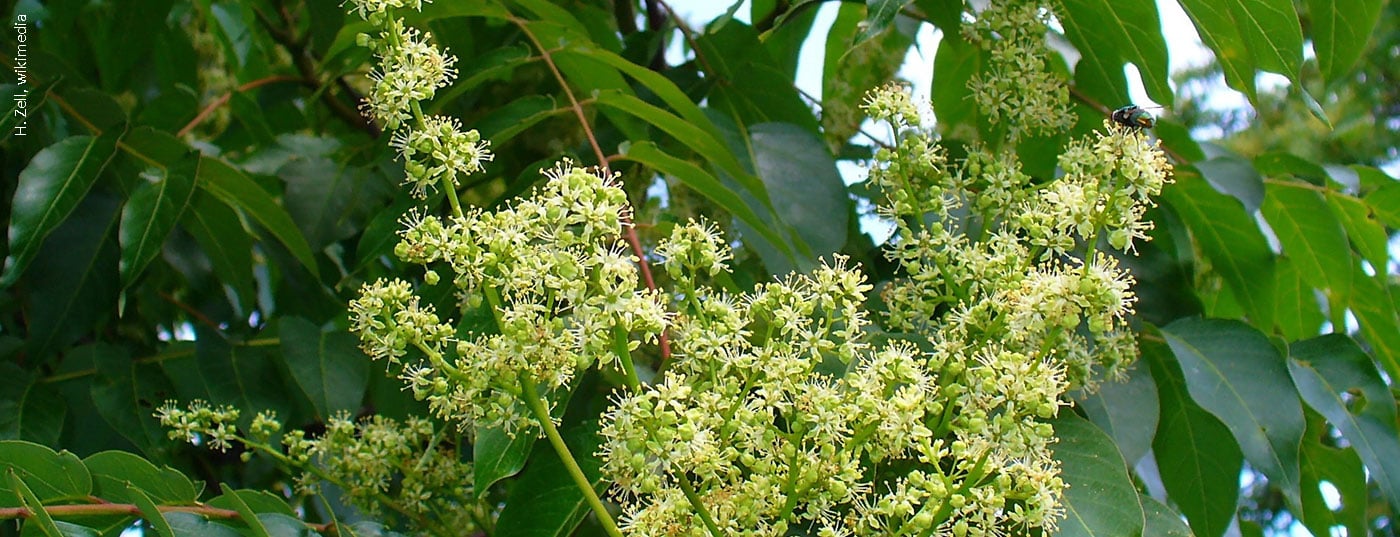Only 6 to 8 of the pollen types found in Central Europe actually cause diseases such as hay fever and allergic asthma. Little attention has been paid to date to the allergenic potential of urban trees. The tree of the gods now comes into focus.
For this purpose, Dr. Paloma Carinanos of the University of Granada and her colleagues categorized 23 parks in the Mediterranean [1]. The greatest importance in triggering allergies in the city there are olive trees, cypresses, Fagaceae and plane trees. The scientists finally developed the so-called Green Zone Allergen Index (Urban Green Zone Allergenicity) for Europe. There, among other things, it is recorded what allergenicity, for example, the olive has compared to other trees, how many are in the specified location, spacing and height. Thus, one has created a list from which you can read which parks are suitable for allergy sufferers them and which are better to avoid. “In this country, too, our cities need planting planning from an allergological point of view,” commented Berlin allergist Prof. Dr. Karl-Christian Bergmann at Allergo-Update. Allergists, pediatricians, environmental physicians, and other specialists should be included in discussions with urban planners. “Get involved in your city or community. Motto: Don’t cut down, think when you replant!”
New in the allergological sights is the god tree (Ailanthus altissima). This is a deciduous tree that is actually native to Vietnam and China, but is also found growing wild on the grounds of the Charité hospital in Berlin. The god tree prefers to colonize warm and sunny locations and is therefore readily present in urban heat islands. The growth rate is considerable, so increased spread can be expected in the future, from the age of 3 years the tree produces seeds. It blooms in June and July and is pollinated by insects, but the pollen also spreads by the wind.
In China, one in two hay fever patients have their allergic rhinitis triggered by these god tree pollens. Prof. Bergmann and his colleagues then asked what the situation was in Berlin [2]. “We identified the first patients who were sensitized to the goddess tree. Upon nasal provocation with Ailanthus pollen, we observed a decrease in nasal flow.” Accordingly, positive nasal inspiratory flow (PNIF, L) decreased before, 10 min after NaCl, and 15 min after Ailanthus pollen in both nasal hemispheres (Fig. 1).

Accordingly, even in our latitudes, people who have become sensitized can react to the tree of the gods with their nose. The European Union has responded by placing the tree of gods on the “List of Invasive Alien Species of EU Importance” in 2019. Thus, the tree is under observation and import, trade and planting of the tree in public areas are prohibited.
Source: Allergo-Update Berlin (D)
Literature:
- Carinanos P, et al: Int J Environ Res Public Health 2019;16: doi: 10.3390/ijerph16081357
- Bergmann KC, et al: Allergo J. Int 2020 accepted. DOI: 10.1007/s40629-020-00122-w
InFo PNEUMOLOGY & ALLERGOLOGY 2020; 2(1): 29.











